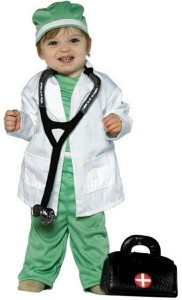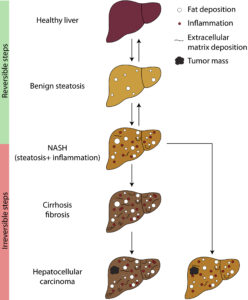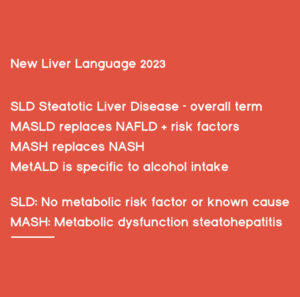What to do with Lab Test Results Lessons from a Human Pincushion

When I got out of the hospital after being diagnosed with the Hepatitis C Virus and told that my liver was failing, I had no idea how to read all the lab values. My bloodshot eyes scanned page after page of websites. I felt like a 1st grader enrolled in medical school. Nothing made sense, and it sure did not stick to my brain, which was addled from cirrhosis. This blog is about
lessons you CAN learn!
I saved a guide on it which at least gives a normal range. I pasted a copy of it below on my website. I have no idea who to thank for this, but it has helped me mucho grande. I always wondered what does WBC RBC HGB PLT and others abc’s mean?
Most of the time, your doctor will give you a copy of your lab results the day you get them. Be sure and ask for it! This will show a H on a value that is High. There will be an L if it is low. These are the ones to pay attention to.
I learned to save them and use a highlighter to mark the areas that I was outside the normal range. A quick glance in the file gave me a reference on how much fluctuation I was having. It was very gratifying to see my numbers change in correspondence with my medication and diet. It also created some anxiety. The realization that my body was broken, my liver was failing, and my blood was very sick was extremely painful. It is our reality. Initially, the numbers froze me in my tracks. I was in bed a lot and experienced depression. Many who have written to me have expressed the same feelings. Do not give up yet.
There is always an alternative way to view things. We can use these numbers in a positive way. Let’s unite in setting goals, changing lab results, and living longer with liver disease. Are you with me?
Here are some DO’s and DONT’S – They provide us with a mental attitude that can be used in combination with a physical action as we view our labs results:
DO Be Pro-active – If your iron is high, get a multi-vitamin without iron. If your hemoglobin is low, ask your doctor how it will be treated. You may feel like you are squawking over every little thing at each doctor appointment. That is okay. This lets them know that you are taking charge of your health. Get the answer you need – then act on it.
DO – Change your diet. I cannot stress this enough. I was a healthy eater, and made even more radical changes. This was a huge part of getting my MELD score down and getting to the place where the doctor would allow Hepatitis C Virus treatment.
DO – Simplify the way you look at it. Know what you can control and work on those areas. Let the doctor do his job – he/she will tell you what you can do to help your blood levels. Do it. Leave the rest alone. It can take weeks or even months to bring levels back toward the normal range. Some of these will not be normal until you are rid of the virus. Some, like platelets, may never be normal if you have cirrhosis. Aim high, and if you fall short, keeping aiming.

DON’T – Think you have to go to medical school to understand your lab results. Let me remind you once more to keep it simple. Do your research. Ask your doctor. Make your changes. Let it go.
Check out the lab values page below. If you need additional information, click the link at the bottom of the page. Always feel free to email me if you have any more questions about what to do with lab test results:. I am not an expert, but I will be your BFF in the battle against Hep C and liver disease. I hope you enjoyed the Lessons from a Human Pincushion, Karen:)
| HEMATOLOGIC | MEN | WOMEN |
| Hemoglobin | 13.5–18 g/dL | 12–16 g/dL |
| Hematocrit | 40–54% | 38–47% |
| Red blood cells (RBC) | 4.6–6.2 million/mm3 | 4.2–5.4 million/mm3 |
| Mean corpuscular volume (MCV) | 76–100 (micrometer)3 | 76–100 (micrometer)3 |
| Mean corpuscular hemoglobin (MCH) | 27–33 picogram | 27–33 picogram |
| Mean corpuscular hemoglobin concentration (MCHC) | 33–37 g/dL | 33–37 g/dL |
| Erythrocyte sedimentation rate (ESR) | C20 mm/hr | C30 mm/hr |
| Leukocytes (WBC) | 5000–10,000/mm3 | 5000–10,000/mm3 |
| Neutrophils | 54–75% (3000–7500/mm3) | 54–75% (3000–7500/mm3) |
| Bands | 3–8% (150–700/mm3) | 3–8% (150–700/mm3) |
| Eosinophils | 1–4% (50–400/mm3) | 1–4% (50–400/mm3) |
| Basophils | 0–1% (25–100/mm3) | 0–1% (25–100/mm3) |
| Monocytes | 2–8% (100–500/mm3) | 2–8% (100–500/mm3) |
| Lymphocytes | 25–40% (1500–4500/mm3) | 25–40% (1500–4500/mm3) |
| T lymphocytes | 60–80% of lymphocytes | 60–80% of lymphocytes |
| B lymphocytes | 10–20% of lymphocytes | 10–20% of lymphocytes |
| Platelets | 150,000–450,000/mm3 | 150,000–450,000/mm3 |
| Prothrombin time (PT) | 9.6–11.8 sec | 9.5–11.3 sec |
| Partial thromboplastin time (PTT) | 30–45 sec | 30–45 sec |
| Bleeding time (duke) | 1–3 min | 1–3 min |
| (ivy) | 3–6 min | 3–6 min |
| (template) | 3–6 min | 3–6 min |
| CHEMISTRY | MEN | WOMEN |
| Sodium | 135–145 mEq/L | 135–145 mEq/L |
| Potassium | 3.5–5.0 mEq/L | 3.5–5.0 mEq/L |
| Chloride | 95–105 mEq/L | 95–105 mEq/L |
| Bicarbonate (HCO3) | 19–25 mEq/L | 19–25 mEq/L |
| Total calcium | 9–11 mg/dL or 4.5–5.5 mEq/L | 9–11 mg/dL or 4.5–5.5 mEq/L |
| Ionized calcium | 4.2–5.4 mg/dL or 2.1–2.6 mEq/L | 4.2–5.4 mg/dL or 2.1–2.6 mEq/L |
| Phosphorus/phosphate | 2.4–4.7 mg/dL | 2.4–4.7 mg/dL |
| Magnesium | 1.8–3.0 mg/dL or 1.5–2.5 mEq/L | 1.8–3.0 mg/dL or 1.5–2.5 mEq/L |
| Glucose | 65–99 mg/dL | 65–99 mg/dL |
| Osmolality | 285–310 mOsm/kg | 285–310 mOsm/kg |
| Ammonia (NH3) | 10–80 mcg/dL | 10–80 mcg/dL |
| Amylase | C130 U/L | C130 U/L |
| Creatine phosphokinase total (CK, CPK) | <150 U/L | <150 U/L |
| Creatine kinase isoenzymes, MB fraction | >5% in MI | >5% in MI |
| Lactic dehydrogenase (LDH) | 50–150 U/L | 50–150 U/L |
| Protein, total | 6–8 g/d | 6–8 g/d |
| Albumin | 4–6 g/dL | 4–6 g/dL |
| HEPATIC | MEN | WOMEN |
| AST | 8–46 U/L | 7–34 U/L |
| ALT | 10–30 IU/mL | 10–30 IU/mL |
| Total bilirubin | 0.3–1.2 mg/dL | 0.3–1.2 mg/dL |
| Conjugated bilirubin | 0.0–0.2 mg/dL | 0.0–0.2 mg/dL |
| Unconjugated (indirect) bilirubin | 0.2–0.8 mg/dL | 0.2–0.8 mg/dL |
| Alkaline phosphatase | 20–90 U/L | 20–90 U/L |
| RENAL | MEN | WOMEN |
| BUN | 6–20 mg/dL | 6–20 mg/dL |
| Creatinine | 0.6–1.3 mg/dL | 0.5–1.0 mg/dL |
| Uric acid | 4.0–8.5 mg/dL | 2.7–7.3 mg/dL |
| ARTERIAL BLOOD GASES | MEN | WOMEN |
| pH | 7.35–7.45 | 7.35–7.45 |
| Po2 | 80–100 mm Hg | 80–100 mm Hg |
| Pco2 | 35–45 mm Hg | 35–45 mm Hg |
| O2 saturation | 95–97% | 95–97% |
| Base excess | +2–(-2) | +2–(-2) |
| Bicarbonate (HCO3-) | 22–26 mEq/L | 22–26 mEq/L |






